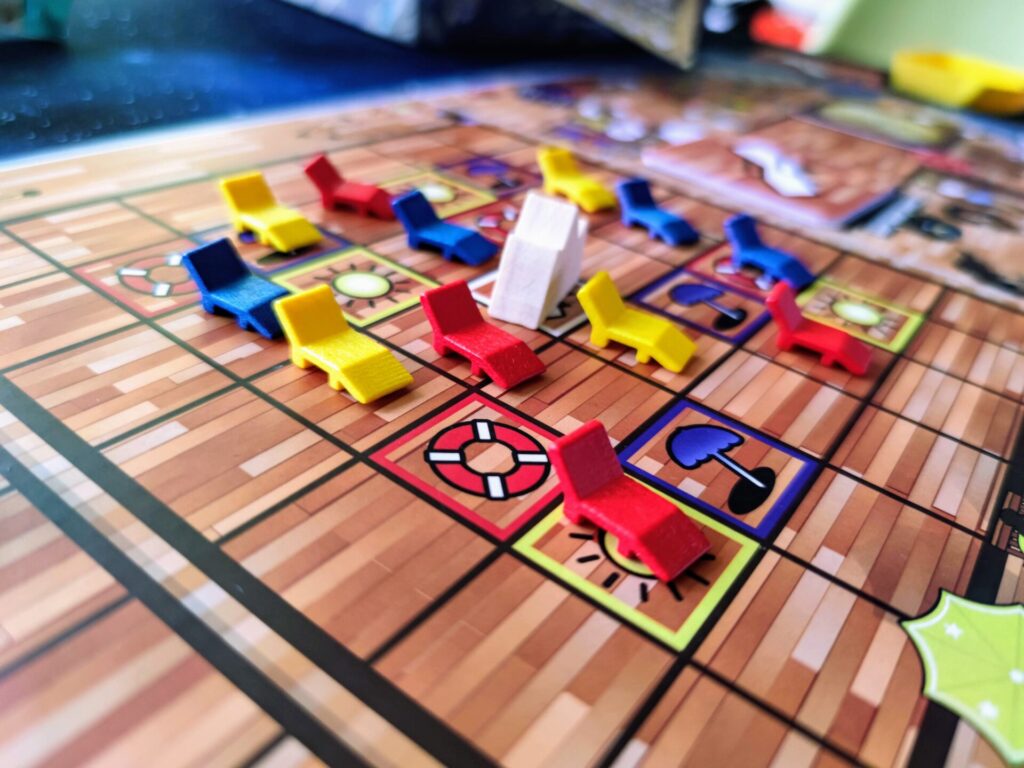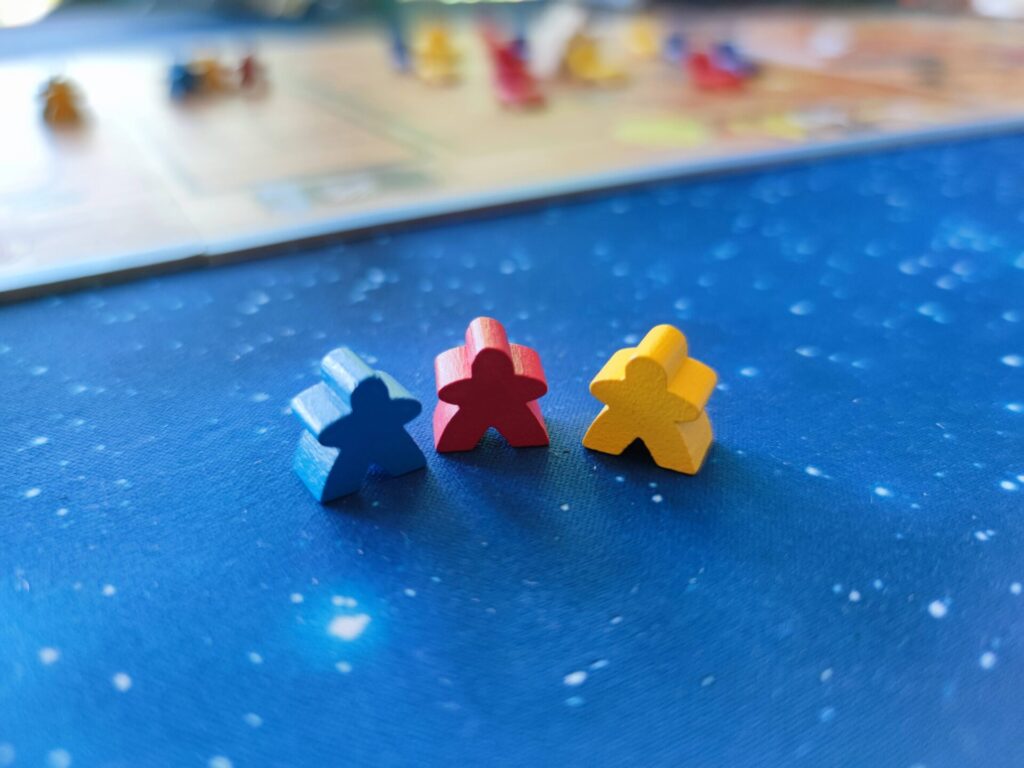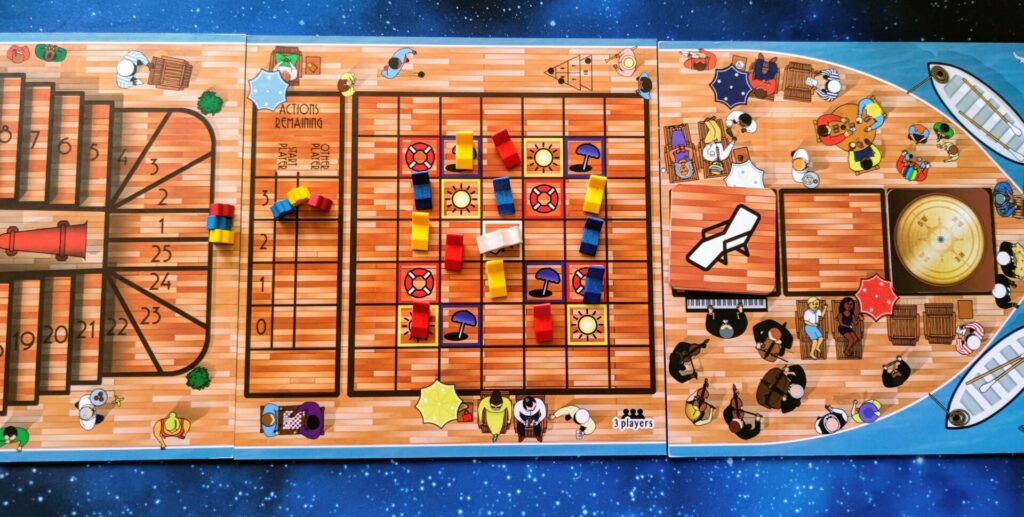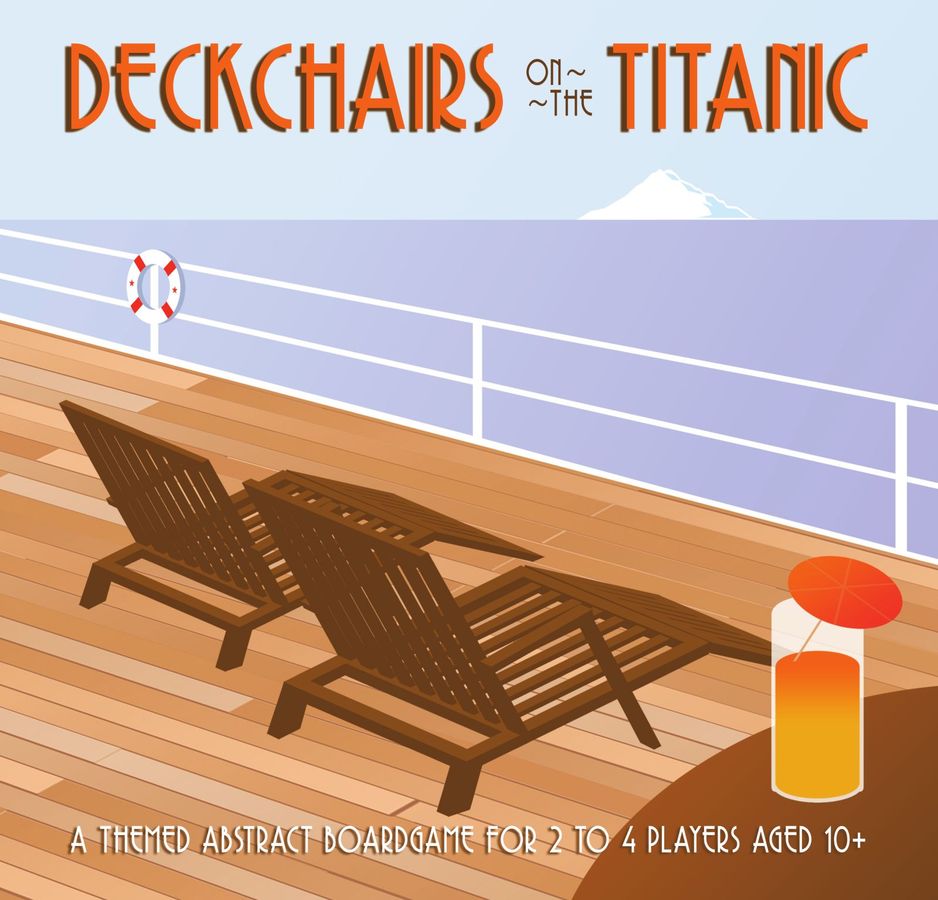I’m fascinated by the origins of some of the board games I play. Inspiration can come from anywhere, so I can find myself trading exotic goods in the far-flung port of Macao, or building cathedrals in 17th century Germany in Hamburgum. So when someone came up with a game based on the ill-fated Titanic, you might expect a race against time game of co-op survival. In the case of Deckchairs on the Titanic, however, you’d be quite wrong.
The premise of this abstract game is simple. You play the roles of deckchair attendants aboard the infamous ship, and your goal is to appease the First Class passengers who want prime deck space for their deckchairs. I think their priorities are in need of re-alignment however, as they’re so close to the iceberg that a chunk of it has landed on the deck, and is ready to wreak havoc in your aim to be the best collapsible seating apparatus operatives.

One step forwards…
Two to four players take turns performing actions. You can move one of your deckchairs one space, or drop your attendant meeple on one of your chairs or an empty space, to stick it in place. Alternatively you can give the ice block a kick in any direction, sending it careening into chairs.
Being at sea means the boat’s going to rock a bit, and you’ve got cards showing you which direction the boat’s going to lean in the current, and next rounds. Once you’ve all taken your turns, everything that can move, does, in the direction shown on the card. If you’ve managed to keep your chairs in the marked spaces, you get points, and the most points at the end of the game wins.

…two steps back
Deckchairs on the Titanic is really cutthroat. In the first couple of rounds it’s every man and woman for themselves, trying to claim the most points they can. When someone emerges as a leader though, there’s a notable shift in behaviour around the table. People start plotting against the leader, doing anything in their power to stop them ending on the all-powerful center space, worth a whopping four points. The ice block can shunt whole rows of chairs, so knowing when and where to use it can prove really powerful.
Maybe you join in this game of kill the king, or maybe you see what the others are doing and spot an opportunity to sneak some points on the sly. In what feels like a really lighthearted game (despite the setting), it gets really competitive. There’s no hidden information at any point – you all know where the chairs are, how many actions each person has, and which way the chairs are going to slide at the end of the round, so you need to use some serious cunning to plan ahead to score well.

Final thoughts
Deckchairs on the Titanic is a great game. Anyone can learn it in a few minutes, and you can bet that after the first game at least one person will say “Riiiiight, I get it now, let’s play again”. Each game only lasts around 15 or 30 minutes, depending on whether you choose the short or long version, so you can easily do a ‘best out of three’ competition in a couple of hours.
It’s pretty good with two players, but with three or four is where is really shines. Trying to keep track of what everyone else is up to is more tricky, and the table chatter gets really interesting. Especially when someone does something you hadn’t noticed. The number of times I’ve said ‘Oooh you…’, even with people I’ve only just met. It’s a terrific ice-breaker, and if you’ve got a particularly experienced player, you can gang up against them.
The artwork is great, capturing that art deco feel, and the components are really lovely. I love the deckchair pieces, it’s such tactile game. It’s currently live on Kickstarter at the time of writing, and you can pick up a copy for £25, which is a really fair price. It’s a gorgeous, quick, fun abstract game, and I really like it.
Review copy kindly provided by Silver Birch Games. Thoughts and opinions are my own.

Deckchairs on the Titanic (2021)
Designer: Tom Holness
Publisher: Silver Birch Games
Art: Miles Hesketh
Players: 2-4
Playing time: 15-30 mins
